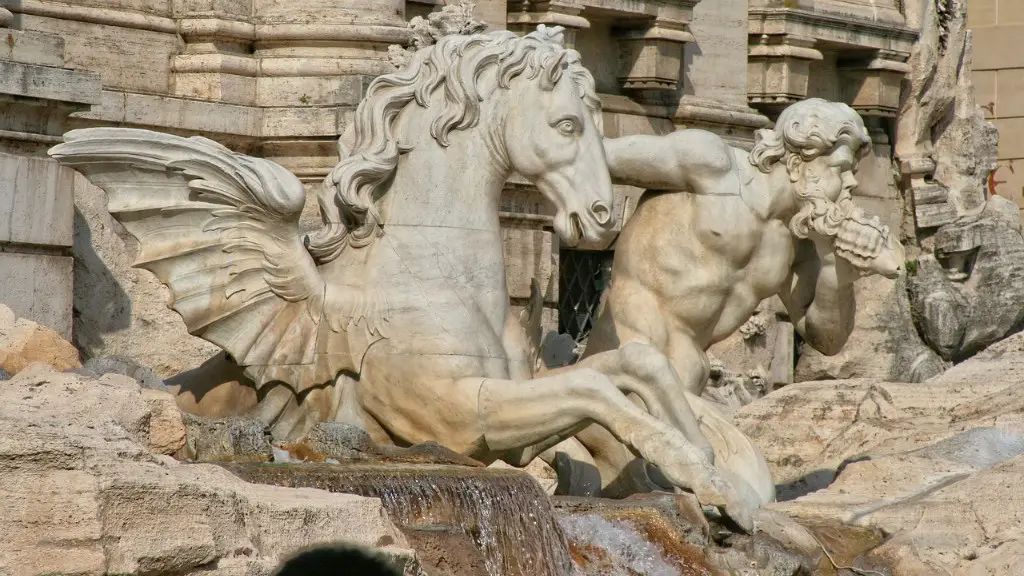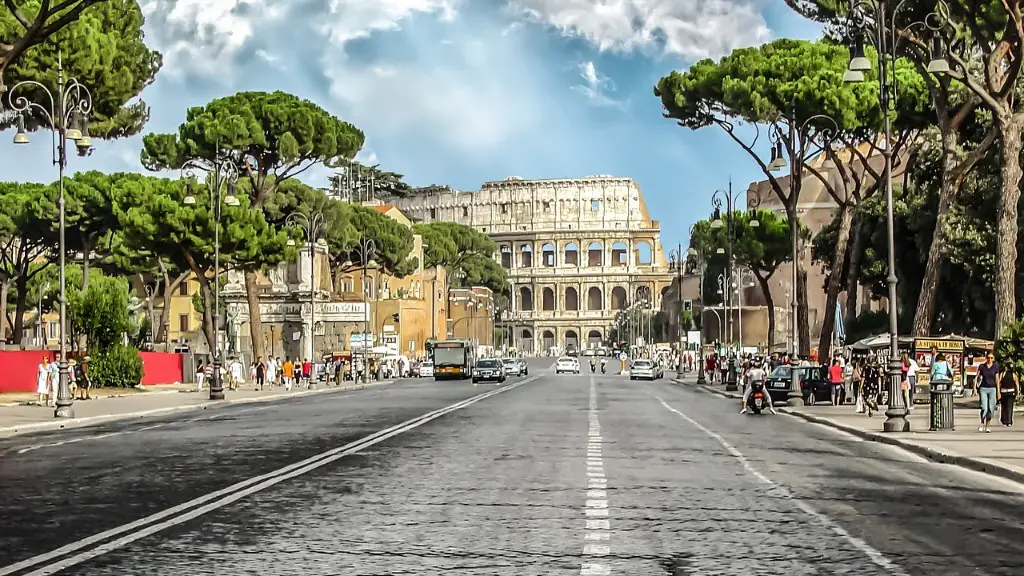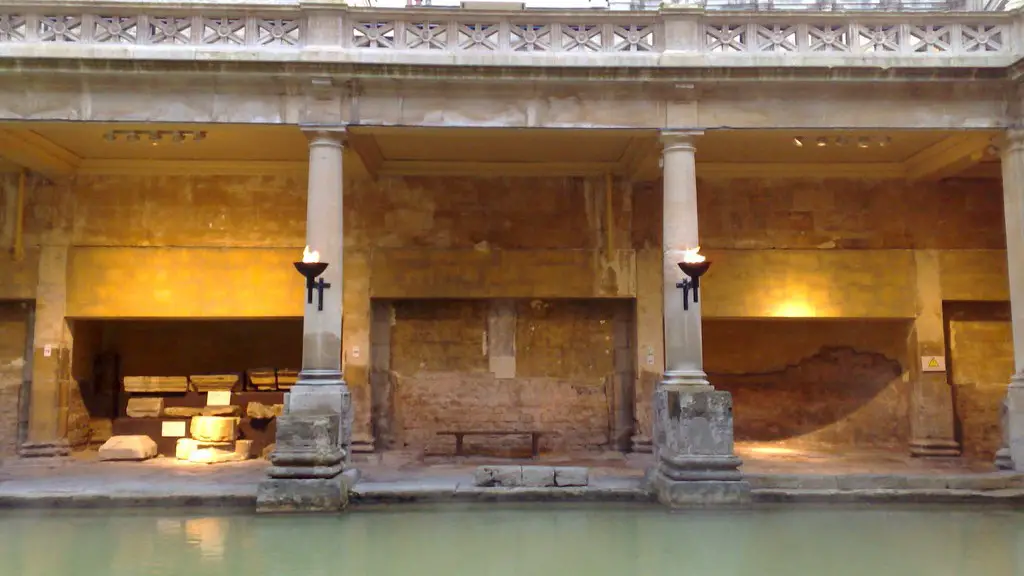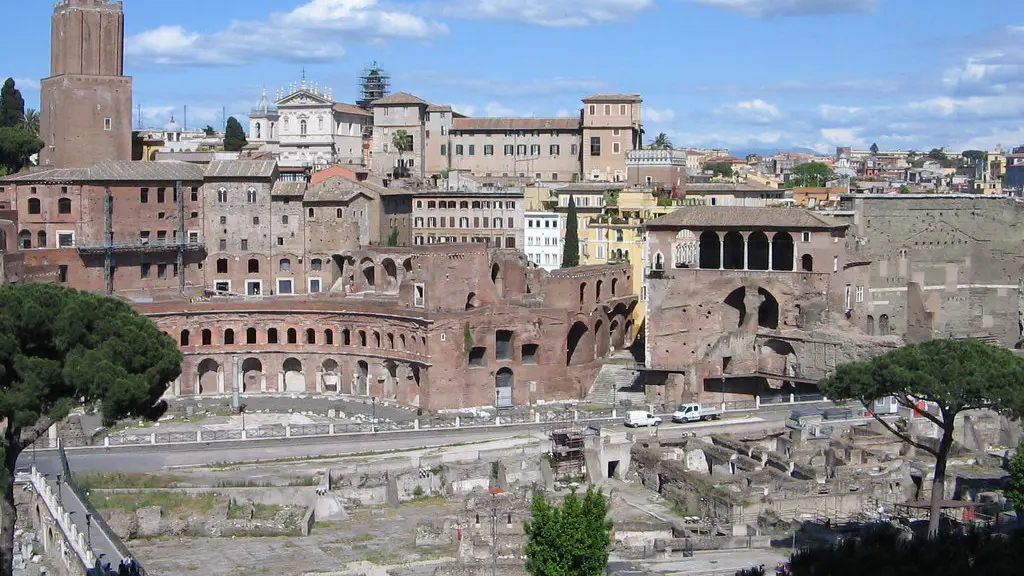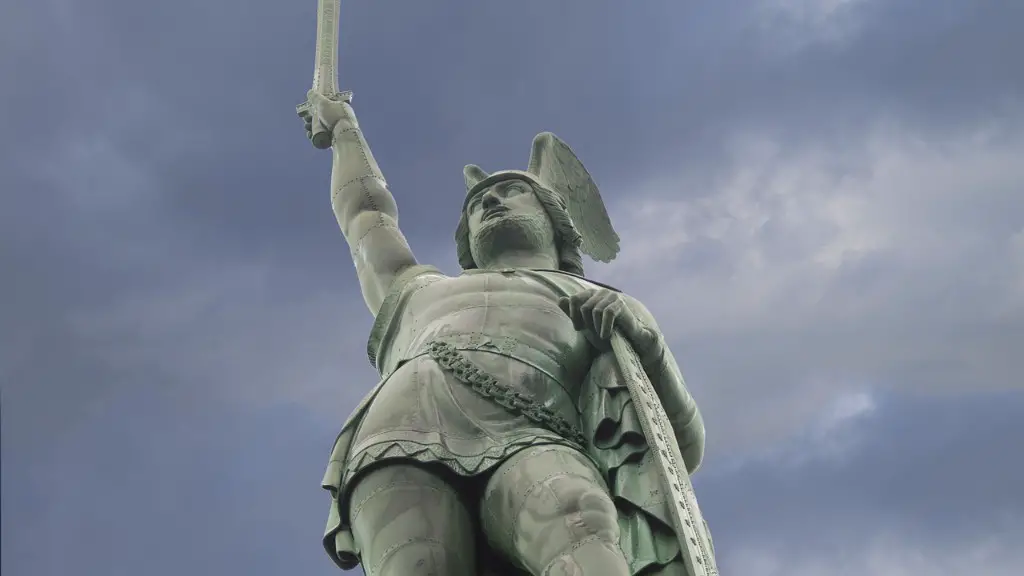Marriage has always played a significant role in the life of a Roman. Ancient Roman marriages were rooted in traditions, social status and religious beliefs. From the simplest peasant wedding to the grand affair of the nobleman, the elaborate religious ceremonies and the awarding of marriage gifts, in ancient Rome marriage was an important and honorable institution.
Roman marriage and family life was very different from today. Roman marriages usually took place within the confines of the family, as it was important to keep the bloodline intact. Families would arrange for their male children to marry women from similar social standings. Rome was also a patriarchal society, where the father was the head of the family and had complete control over the marriage of his children. One of the most popular marriage ceremonies in ancient Roman times was known as the “confarreatio”, which was a religious ceremony that included a number of rituals and vows.
In ancient Rome, a couple would be wed in the home of the bride. There the family priest would preside over the ceremony, and it would usually take place in the atrium. After the ceremony, the couple would be declared married and a feast would usually follow, with friends and family of the couple joining in to celebrate. The traditional Roman marriage would typically also involve religious rites, such as sacrificing animals in front of an altar and exchanging of items, such as rings.
The traditional Roman marriage bears many similarities to traditional Christian marriages. In both cases, the couple make solemn vows to each other and there is an exchange of marriage gifts. In ancient times, the Romans also practiced monogamy, meaning that a man could only have one wife. This was so that inheritance would not be divided among multiple heirs.
The traditional Roman marriage was very important in the civilization of Ancient Rome. It provided the basis for both a strong family unit and strong ties to the religion of Roman gods and goddesses. Marriage was about much more than just procreation. It was about forming unions and alliances of families and protecting the linage for generations.
Today, many of the traditional Roman marriage customs are still practiced in some parts of the world. From the brides wearing of jewelry and flowers to the traditional vows and the exchange of rings, many of the traditions still seen today can be traced back to the ancient Roman marriage customs. For a true understanding of the marriage customs of Ancient Rome, it is important to look at Roman mythology, religion, and family life at the time.
Roman Wedding Traditions and Customs
The most common tradition in the Roman marriage ceremony was the exchange of dowry and wedding gifts between the families of the bride and groom. In Ancient Rome, these gifts were not only meant to signify the union between the couple, but also the wealth of their families.
Another important part of the Roman marriage ceremony was the way the bride was dressed. It was tradition that a bride would wear a white tunic and veil, with a golden girdle around her waist. This was meant to symbolize her submission to her husband.
An important aspect of the Roman wedding ceremony was a ritual known as the “suovetaurilia”. This was a three-animal procession, typically consisting of a pig, a ram and a bull, which would be sacrificed to the gods in a religious ceremony. This ritual was meant to ensure the fertility of the couple and the prosperity of their offspring.
The rituals of Ancient Rome also included the exchange of rings to symbolize the eternal bond between the bride and groom. In Ancient Rome, the rings were usually made of iron, as it was believed to be a more durable metal than gold and silver. After the exchange of rings, the Roman wedding ceremony would conclude with a sacrifice to the gods and a religious blessing.
Social Aspects of Roman Marriage
Ancient Rome was a highly stratified society, and marriage was seen as an important way to maintain and perpetuate the social hierarchy. It was not unusual for couples to wed for financial gain, or for a woman to be married off against her will, in order to form political or economic alliances.
Marriage was seen to be of great importance in preserving the bloodlines in families. In Ancient Rome, it was not considered desirable for a person to marry someone from a lower social class. Thus, marriages were carefully arranged between families of similar social standing.
A large part of Ancient Roman family life revolved around religion. It was the gods who were believed to have ultimate control over the outcome of a marriage. Many families engaged in activities of veneration and sacrifice to placate the gods and ensure a good marriage and a successful union.
In Ancient Rome, men were seen as the head of the family. Often, men had a great deal of control over the marriages of their daughters and sisters, and women were expected to be subservient to their husbands. Marriage was an important part of woman’s life, and she was seen as a wife first, and a daughter or sister second.
Conclusion of Roman Marriage
In conclusion, marriage was of great importance in the ancient Roman civilization. It was seen as a way to maintain the social hierarchy, to strengthen family ties, and to honor the gods. Couples were wed in the home of the bride and a number of religious and traditional rituals accompanied the ceremony. Although there have been many changes in marriage ceremonies in the years since Ancient Rome, many traditional Roman wedding customs are still practiced today.
Roman Wedding Banquets and Celebrations
Weddings in Ancient Rome were not just about the ceremonial exchange of vows; they were also an opportunity for families to come together to celebrate the union. Once the wedding ceremony was over, the couple would be served a lavish wedding banquet. This was typically held in the home of the bride’s family and carefully prepared dishes were served to the wedding guests.
Wedding banquets were often very elaborate and as a form of entertainment for the guests, jugglers and musicians were hired. This was followed by a procession of the wedding guests and the couple from the home of the bride’s family to the home of the groom’s family. This was used to show that the couple had now become part of the groom’s family.
During the procession, it was tradition that the groom had to carry a torch in order to light their way. The procession ended at the groom’s home and the couple would then address their guests with a declaration of love and commitment. This was meant to encourage the wedding guests to accept the union and desire the couple’s happiness.
The festivities would usually continue lateinto the night and sometimes even the next day. Roman weddings were seen as a way for families to come together and celebrate the union of two families, and at such times, the celebration would be a lavish affair.
Roman Marriage Vows
The Roman marriage ceremony included a set of traditional marriage vows that the bride and groom had to exchange. These marriage vows were known as matrimonii or ‘marriage bonds’ and included a commitment to be faithful, loyal and loving to each other for life. Women were expected to be subservient to their husbands, and men to be loyal to their wives.
Along with the exchange of the matrimonii, the bride and groom would also exchange symbols of their bond. In Roman times, the exchange of rings was a very popular tradition, as was the giving of wedding gifts to the newlyweds such as clothing and jewelry. The giving of gifts was seen as a way to signify the commitment of each family to the newly formed partnership.
Once the wedding vows had been exchanged and the exchange of gifts completed. It was time for the bride and groom to take each other’s hands and pledge their love and loyalty to each other for life. This was the final part of the Roman wedding ceremony and the beginning of a new union.
The Impact of Roman Marriage Customs Today
Today, the traditional Roman marriage customs are still seen in some parts of the world. Though in some ways, weddings have changed with the times, there are still aspects of the traditional Roman wedding that remain true. The exchange of rings and wedding gifts, the traditional vows, and the celebration of the union are still important aspects of a contemporary wedding.
The Traditional Roman Marriage is still seen today as an indication of the commitment of two people to each other. Though the rituals may have changed, the goal is still the same, to honour the union between two individuals and their families.
The marriage customs of Ancient Rome have come to define modern marriage ceremonies. In many ways, the traditions of Ancient Rome have left a lasting impression on the way we conduct our marriages today.
